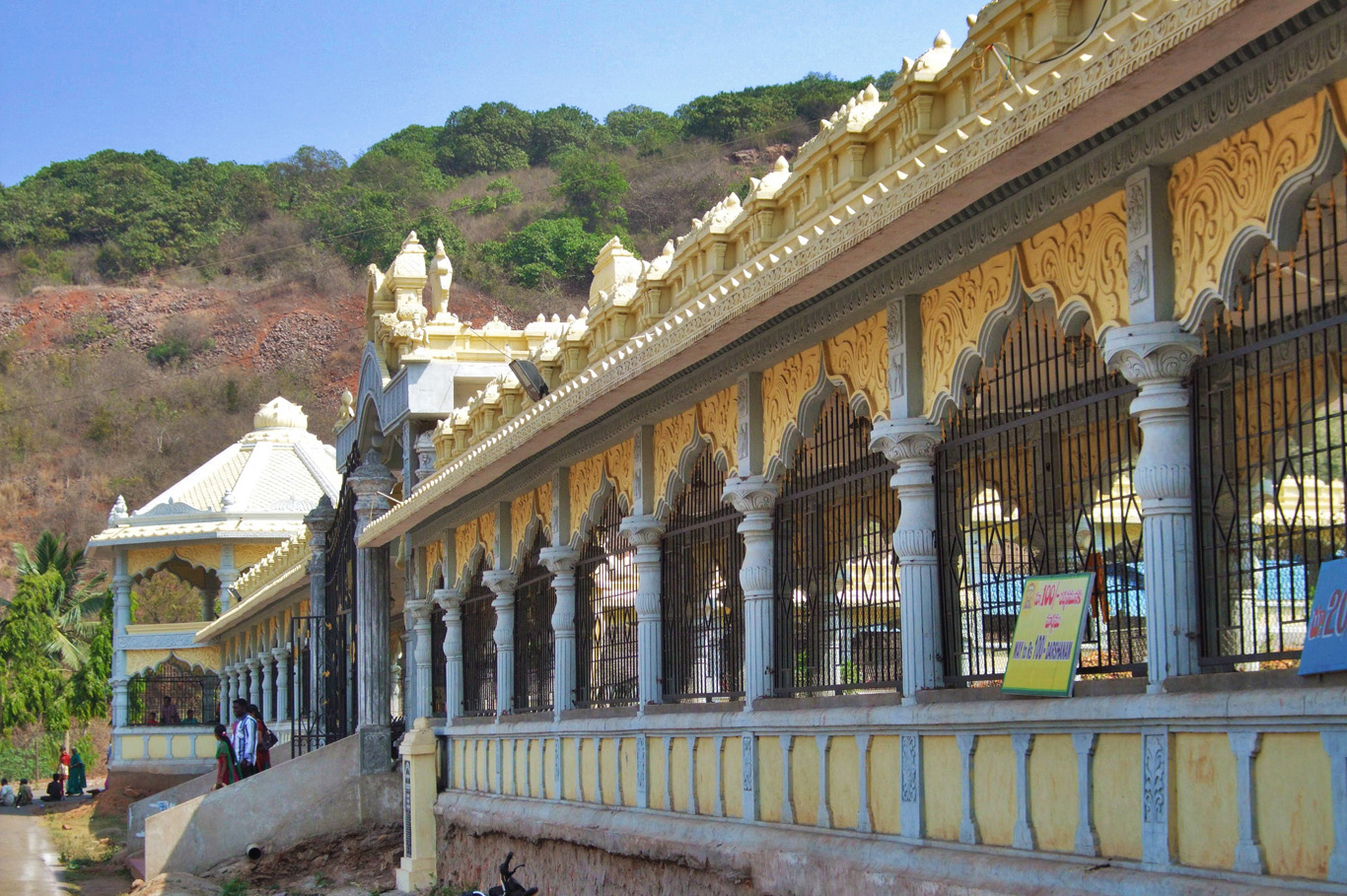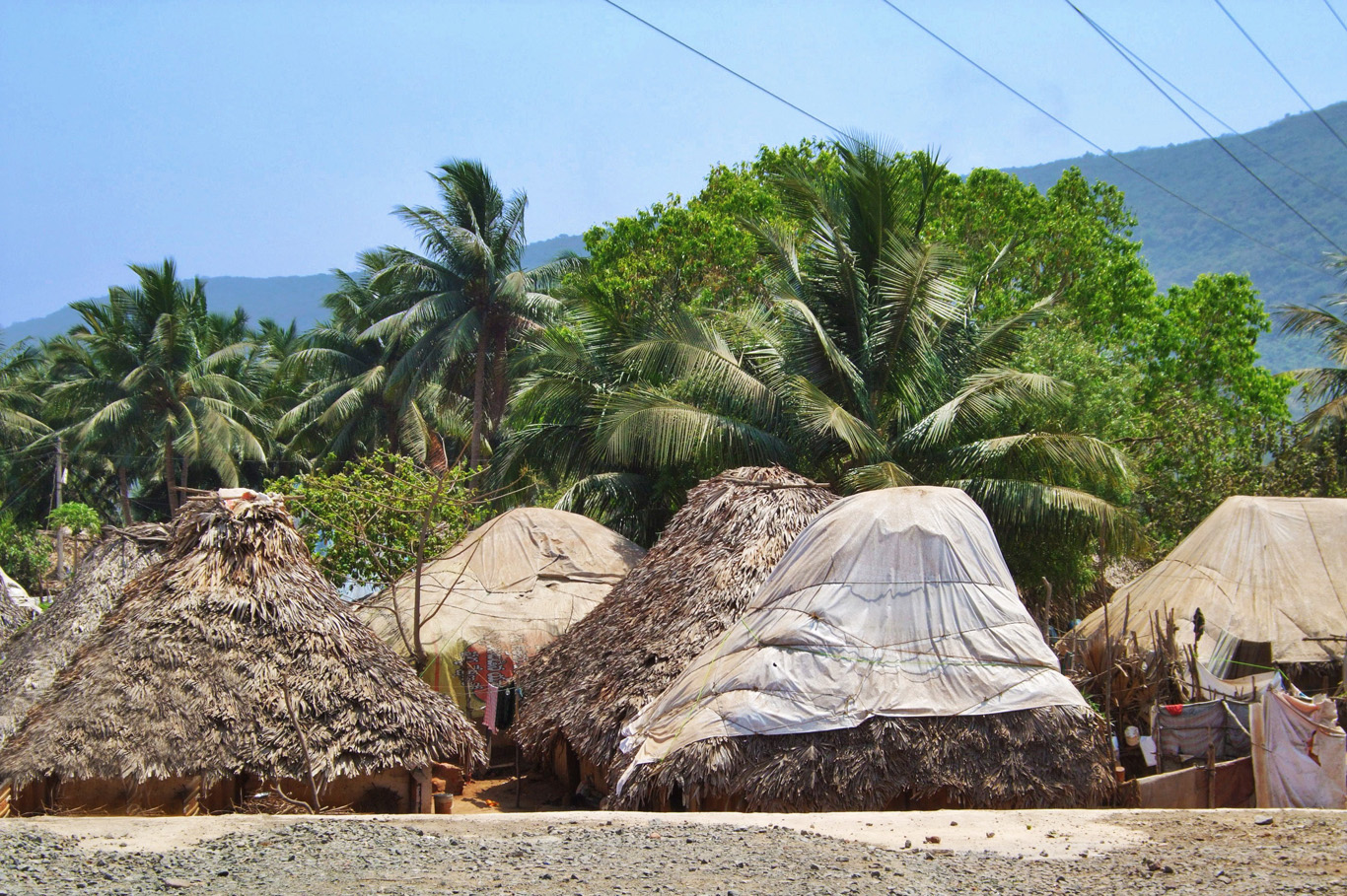The beautiful park located on the hill near the city was the first place I visited in Visakhapatnam. The traffic was absolutely mad and I still couldn't believe my eyes that all this was real. But the park and the view from the hill were stunning. It was cleaner there than in the rest of the city, but still, to see a lot of rubbish thrown everywhere in such a beautiful place was an eyesore. The interesting thing is that my friends and I didn't encounter any western tourists there with the exception of two white people during our 3-day stay in Vishakapatnam. Therefore we noticed huge interest and curiosity of the locals. They kept looking at us all the time and quite often someone (especially children) asked where we were from and they wanted to know something about our life and culture. That staring wasn't annoying or uncomfortable though. They were very friendly and it was nice to tell them something about our way of life. Almost everybody spoke English. It's a good idea to bring something small for the children. We had little pens that were shining when pressed. It was such a tiny gift but it really made them smile and it was easy to notice how happy and excited they were.
Simhachalam Temple in Vishakhapatnam
Visakhapatnam
Simhachalam Temple in Vishakhapatnam
Next morning, we visited Simhachalam Temple in Vishakhapatnam. In front, there was a market where local people sold fruit, vegetables, food and craft-works. Then we got onto a large square where you it was not allowed to wear shoes (you can't enter any Indian temples with your shoes on). It was a bit far from the temple and the surface was extremely hot because of the heat, and, for us Europeans it was a bit difficult to bear the pain of walking barefoot as we were not used to it. Normally, it's not easy to enter the temple, there were long queues, many pilgrimages came to visit it. Waiting time to get in was around 4 hours. Fortunately, my Indian friend had 'connections' and we were able to get inside immediately. Taking pictures was strictly prohibited and I wish it hadn't been because the interior was simply amazing. Made of black stone, quite dark and with many columns and detailed carvings. In the middle of the temple, there was a statue of a God around which we had to walk and then we got some blessings from the priest who put flower garlands on our necks. Of course, some offering, to scare evil spirits away, was necessary (funny thing was that when he saw us, he asked for euro or dollars).
It was an extremely amazing experience to visit a temple like this. Something unique, and different, something you will not experience anywhere else. But the day wasn't over yet so while coming back we stopped near a small settlement of huts constructed with clay and palm tree leaves. The contrast of the modern buildings and a highway passing right through the middle of this village gave the impression as though two completely opposite worlds, totally opposite eras collided. You look to the left and you see a modern city, you look to the right and you go back in time at least two hundred years or so.
Simhachalam Temple in Vishakhapatnam
Sugar Cane juice squeezing
The huts were made of mud, clay and, sometimes, a type of bricks and were covered with palm tree leaves. They were quite small, with the door only 1,5 m (4.9 feet) high. You had to bend over to get in. We were lucky and a woman (one of the hut's dweller) invited us to see her home. Inside, there was a bed, a big bottle of water, some simple pots and cutlery. What surprised us the most, there was a calendar with Jesus on the wall. I'm not sure if they were Christians or if they just used it as decoration, though. (In southern India, Christianity is getting popular and there are many Christians and Christian churches).
For someone from the West, at first, it's unbelievable how so many families can live in such limited space and primitive conditions. But, actually, from what I found out later, this way of life is relatively nice. The cottages are neat and well maintained and the area is clean and well organised. The settlement can't be called or compared to slums. Real slums are shocking and it's completely unthinkable to even imagine that people are able to live in places like that. It defies human dignity. I saw one of the slum areas from a train window and it was horrifying. Masses of people together with dogs, cows, monkeys and animals of all sorts under one roof. The shacks are made of wooden stakes that are covered with plastic film and refuse sacks found on rubbish dump. Of course one can forget about such basic things as electricity, running water, bathrooms. There was a little stream flowing through the area around which people were washing their clothes, cooking their food and 'going to the toilet'. Of course all of it done outside in public, so sometimes you can spot the bottoms (of those doing their 'business') sticking out towards you while you are on the train. Unforgettable views.
The stream was grey and thick, it reminded more of sewage than a little river. Maybe it was the actual sewage. There were drainpipes around and some grey substance was flowing out of them. Right into the stream. All of this is a terrible sight and it's really eye-opening. You start going through your everyday, first-world life problems and reach the point where you are really ashamed of most of them. Bills? No money for a new car? Recession? What is it? Does it even exist? Visiting India is a really mind-changing experience, especially for people living in mass media controlled societies focused on consumerism where everybody tries to tell you: 'you are what you have'. You realize you indeed live like a king comparing with the poor in the slums. What is even more shocking is that the rich seem to co-exist right beside the slums. A new, modern, glass covered shopping center with many expensive items (especially jewelry) may be surrounded by shacks that are falling apart. And the 'sex and the city' type of girls come out of the jewelry shop with many bags filled with well known brands items, literally stepping over the homeless and getting into a brand new car. They seem not to bother. Pretend not to see. Maybe they are so used to it that they really don't notice. This is probably the way the were brought up, the cultural thing, the still alive cast system. And what is shocking to us is considered normal to others.
Road passing through the village
Huts in Visakhapatnam
Huts in Visakhapatnam
Inside one of the huts
Inside one of the huts
A stove in the village
Related Posts
Copying without permission is not allowed. If you wish to use any of the site's content (photos or text) or work with us, please contact us.
We welcome questions, advice, support or criticism. However, spam comments will be removed.


















